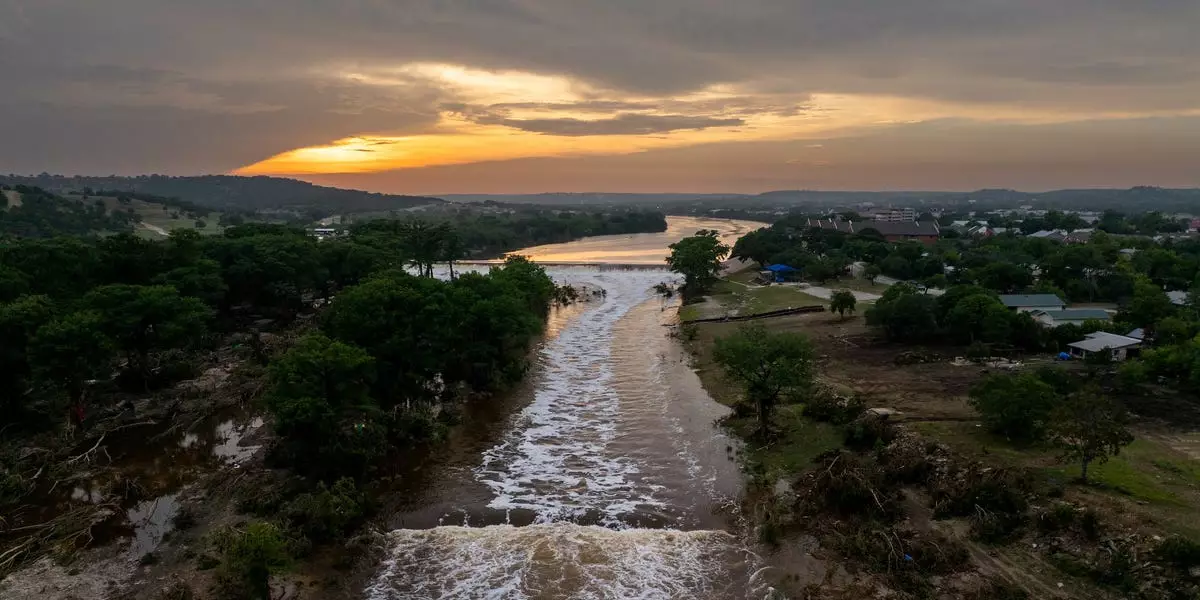In July 2023, the Texas Hill Country was overshadowed by one of the most catastrophic floods in American history over the past century. With at least 88 confirmed fatalities and many more still missing, this disaster serves as a stark reminder of nature’s unpredictable and lethal force. What makes this tragedy particularly harrowing is the profound loss of innocent lives—especially children—caught unprepared in a moment of joy and celebration. The flood’s ferocity was compounded by a combination of rapid weather changes and systemic flaws in warning mechanisms, sparking a debate on society’s collective resilience against such natural disasters.
The incident illustrates an alarming gap between emergent weather patterns and the ability of communities to respond swiftly. The flooding occurred during a festive holiday weekend, amplifying the risk of unanticipated gatherings near water bodies. The Guadalupe River surged an incredible 26 feet in less than an hour, a phenomenon that caught many off guard due to delayed or insufficient alerts. This highlights a critical lapse: how can a community enjoy a holiday, oblivious to imminent danger, only to be devastated by a flash flood that develops with terrifying speed? The tragedies that unfolded reveal the need for more sophisticated early warning systems capable of transmitting real-time alerts precisely when they are most needed.
While natural elements are beyond human control, the tangible failures in communication and preparedness suggest that society’s systems need an overhaul. The loss of young lives, notably the campers at Camp Mystic—an institution steeped in history and heritage—forces us to question how well our safety protocols are designed to protect vulnerable populations. Camp Mystic’s legacy, once a symbol of wholesome childhood memories and political history, was tragically overshadowed by chaos and tragedy. The death of camp director Dick Eastland, who died in a valiant attempt to rescue children, embodies the selfless heroism that often emerges amidst chaos but also underscores the importance of preventing such chaos in the first place.
Systemic Failings and the Need for Proactive Measures
This disaster shines a glaring spotlight on systemic shortcomings—both in infrastructure and crisis management. Emergency alerts that could have saved lives were either not issued in a timely manner or did not reach all residents. The question is whether investments in more robust warning systems, such as integrated SMS alerts, siren networks, and community-based notification protocols, could preempt such tragedies. It is undeniable that technological advancements today can provide early warnings with enough lead time to evacuate at-risk populations, but gaps in implementation leave many vulnerable.
Moreover, community preparedness must extend beyond technology. Evacuation plans, especially for transient populations like campers and festival-goers, need to be clear, rehearsed, and accessible. The sluggishness of response during the initial moments offers a painful lesson: preparedness isn’t solely about technology but also about education and community engagement. Knowing where to go and how to respond when the earth trembles or water rises suddenly can mean the difference between life and death.
Support for the affected should also be rooted in a moral imperative—an acknowledgment that these are preventable tragedies to some extent. The collective response, through organizations like the Red Cross, Search and Rescue teams, and food relief initiatives launched by reputable organizations, underscores society’s capacity for resilience. Yet, this response is reactive; the true challenge lies in shifting towards a preventive culture that minimizes the frequency and impact of such disasters.
Rebuilding Not Just Infrastructure, but Trust and Systems
In the aftermath of tragedy, communities often grapple with feelings of loss, grief, and frustration. The families of victims, especially children, are left to confront the harrowing reality that life can be so fragile, even in familiar, seemingly safe environments like summer camps. This tragedy demands introspection—a reassessment of how we prepare for volatile weather events and how we can better shield the most vulnerable.
Investing in resilient infrastructure is only part of the solution. Society must foster a culture that values proactive planning, technological innovation, and emotional preparedness. Governments, nonprofits, and local communities should collaborate to develop layered safety nets capable of addressing both immediate threats and long-term recovery needs. Only through comprehensive, systemic change can we hope to prevent future catastrophes from claiming lives that could have been saved with better foresight.
The Texas floods have cast a long shadow, exposing vulnerabilities that demand urgent attention. They challenge us to rethink our approach to disaster preparedness—not just as an emergency response, but as an ongoing commitment to safeguarding lives, especially those most at risk. Our collective response now will determine how resilient we are when the next storm inevitably approaches.

